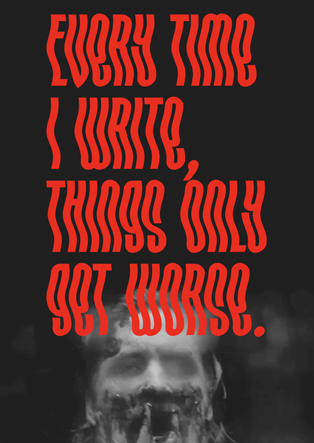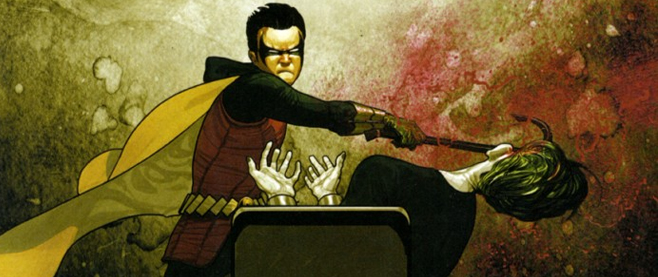
The Agony of Adaptation: Hellboy and the Perils of Fandom (and Kickstarter)
I see board games in the store and they always look so cool and then I buy them and bring them home, I’m so excited to open them, and then I play them, like, twice… This column is dedicated to the love of games for those of us whose eyes may be bigger than our stomachs when it comes to playing, and the joy that we can all take from games, even if we don’t play them very often.
When I started this column, this was going to be its second installment. Then, things happened. First, the pandemic. Then, a few months ago, longtime Hellboy editor Scott Allie got outed as a sexual predator – not for the first time, it must be said, though this time it seems to have maybe stuck.
For a while there, writing about Hellboy: The Board Game, about being a Hellboy fan, and what the franchise means to me as a creator, all felt too fraught. Honestly, it’s still fraught. It’s impossible to imagine a scenario where the knowledge of the long-term abuse that Allie apparently perpetrated while hiding behind Hellboy’s success doesn’t color any discussion of the material – and it should be. Those are serious and important topics – and I’ve discussed them elsewhere at some length – but this is probably the last time I’ll mention them here, since I wrote most of this before any of that happened.
Because here’s the thing: I am a fan of Hellboy, and I have been for a long time. Mignola’s work on the title is responsible, to a huge extent, for shaping the writer that I am today. It’s a big deal for me, even with the dark clouds that I’ve already talked about hanging over it.
Something I’ve learned over the years, though, is that many Hellboy fans are fans of Hellboy first, just as many (perhaps most) Batman fans are followers of the character, not any particular artist or writer who has worked on him. Hellboy fans may have come to the franchise via the Guillermo del Toro films and worked their way backward (which is fine; commendable even) or they may have gotten on board only after the explosion of the various Mignolaverse (as they’ve come to be called) titles.
None of these are the wrong way to be a Hellboy fan, if there even is such a thing, but they’re also not how I got here. Not only have I been on board since very nearly the start of the thing some twenty-five years gone now, but I have discovered, in my consumption of all things even tangentially related to the property, that what I am actually a fan of is more Mike Mignola than any of his specific creations.
Mignola’s art, his imagination, and his style of storytelling have all fired my own creative impulses to such an extent that I can’t tell you what my own imagination would look like without the influence of his. Mike has a story that he tells in interviews about how, after reading Bram Stoker’s Dracula at a formative age, he realized that all he wanted to do was “draw monsters.” My own similar realization came as a result of Mignola’s work on Hellboy and its associated titles.
I mention all this to set the stage for the actual subject of this column. The most obvious adaptations of Mignola’s Hellboy mythos are, of course, the big screen translations, first by Guillermo del Toro (who gave us something closer to a masterpiece than we could have realistically asked for, and then also Hellboy II somehow) and then by Neil Marshall just last year.
Their various fidelity – or lack thereof – to the source material notwithstanding, the films are simply a different beast from the comics. Even Marshall’s adaptation, which probably stays the closest to the printed page in terms of actual incident, feels a million miles away in terms of tone.
But there are also other places where Hellboy has wandered out of the pages of his own comics and into the “mainstream.” Besides two animated features – and a pilot for a proposed Amazing Screw-On Head TV series that apes Mignola’s visual style almost unerringly – there are novelizations by folks like Christopher Golden, Tom Sniegoski, Mark Morris, Tom Piccirilli, and others. There are short story collections featuring tales from folks like Nathan Ballingrud, Laird Barron, Paul Tremblay, Cody Goodfellow, Joe R. Lansdale, China Miéville, Frank Darabont, and Poppy Z. Brite.
There is a GURPS-based roleplaying game put out by Steve Jackson Games and, more recently, a 5e-compatible RPG Kickstarted by the same folks who made the board game we’re actually here to talk about. There are at least two video games, neither of which I have ever played, not to mention showing up as a character in the DC universe fighting game Injustice 2.
There are toys galore, Funko Pops, coasters, lunch boxes, Halloween costumes, jigsaw puzzles, zippo lighters, wrapping paper, you name it. Quite a feat, really, for a character still owned by his original creator.
Some of these adaptations are better than others, for values of “better” that, usually, mean more to my liking, but none of them feel like the “real thing,” which is probably inevitable. It’s a problem that is only exacerbated by the realization that I am more a fan of Mignola and his wonderfully gothic imagination than I am of Hellboy or anyone else in the vast and delightfully pulpy world of the Mignolaverse.
The further things get from Mignola’s direct involvement, the more my interest declines. This is probably unfair to the products themselves, which would benefit from a fairer look by unbiased eyes, but I don’t have those eyes, and can’t summon them up, so here we are.
Which brings us around, finally, to Hellboy: The Board Game, produced by Mantic Games, designed by James M. Hewitt and Sophie Williams, funded via Kickstarter, and currently occupying an entire shelf all its own in my office.
If you buy Hellboy: The Board Game at your friendly local game shop, it is merely enormous, not necessarily absurdly so. (It isn’t Gloomhaven, after all.) But I didn’t buy it that way. I was in on the Kickstarter from the jump, and I went all in.
So I got the expanded box for Kickstarter backers – the one so thick it only barely fits on a bookshelf – not to mention the so-called “Box Full of Evil” expansion and the additional “Wild Hunt” expansion that was tacked on near the end of the campaign.
That’s close to 200 miniatures, plus room tiles, tokens, cards, and so on. It’s an absurd amount of stuff that makes for an intimidating storage conundrum. It’s also considerably more than you can expect to get if you just buy the (pricey, let’s face it) core game off the shelf.
That core game comes with a “mere” 25 miniatures and only a handful of “case files” – the pre-gen missions that allow you to play the co-op game. That’s enough to play the game, sure, but it’s not enough to eke much variety out of it. You’ll be fighting variations on frog monsters and foiling Rasputin and some big tentacles and that’s about it.
If you want to explore more than one miniscule corner of the vastness that is the Mignolaverse on the tabletop, you’ll end up needing one of the (also pricey) expansions. These may drop you into truncated versions of major storylines like “The Conqueror Worm,” “Darkness Calls,” or, a personal favorite, “Hellboy in Mexico,” but there are also significant absences that don’t yet have representation on the table.
While those who backed the Kickstarter may be able to play as the alien Visitor or even undead witchfinder Henry Hood, characters like Sir Edward Grey, Ben Daimio, and others are notably absent. And even among what is available, some of it is Kickstarter exclusive stuff that you’ll have to buy aftermarket – at a premium, of course – if you didn’t get it while the getting was good.
Ultimaely, Hellboy: The Board Game is a dungeon crawler, sharing aspects in common with many of the more fantasy-themed installments that I’ve talked about in the past, including dice that scale up in color a la Descent. As these things go, it plays pretty smoothly. Characters get action cubes each turn, which they can spend to perform movement, attack, and so on, not to mention using special abilities that are unique to their character.
Like other horror-themed dungeon crawlers, it seems to be weighted toward difficulty, with the Doom Track mechanic (not dissimilar to the kindred system in Arkham Horror) making it likely that you’ll end up facing the boss before you’re ready – and, therefore, also likely that you’ll lose. But getting there is half the battle, and that getting there is pretty fun.
What the game does surprisingly well is how it captures the magic of the comics. Sure, pushing your minis around on room tiles and rolling dice is never going to be quite the same as enjoying Hellboy’s exploits on the printed page, but cards like “Helpful Skeletons” bring the experience closer than I would have imagined possible.
The only real downside is that, to get the full range of that experience, you have to either be willing to pony up an awful lot of dough, or have already gotten in on the Kickstarter when it was funding back in 2018.





